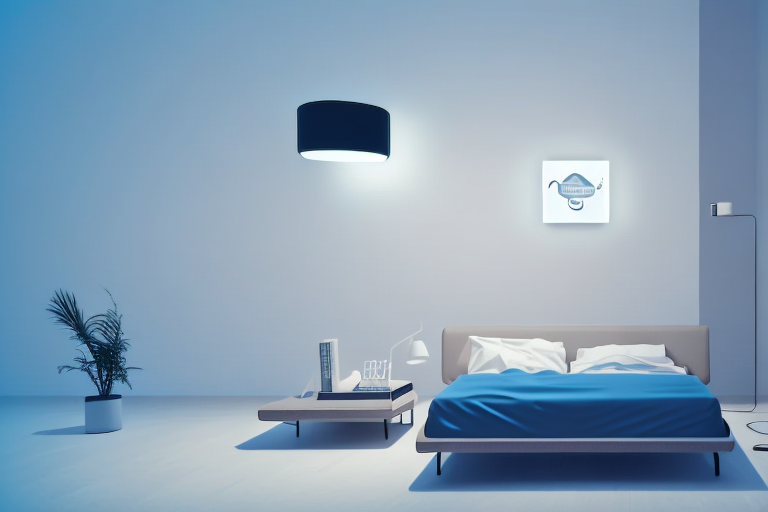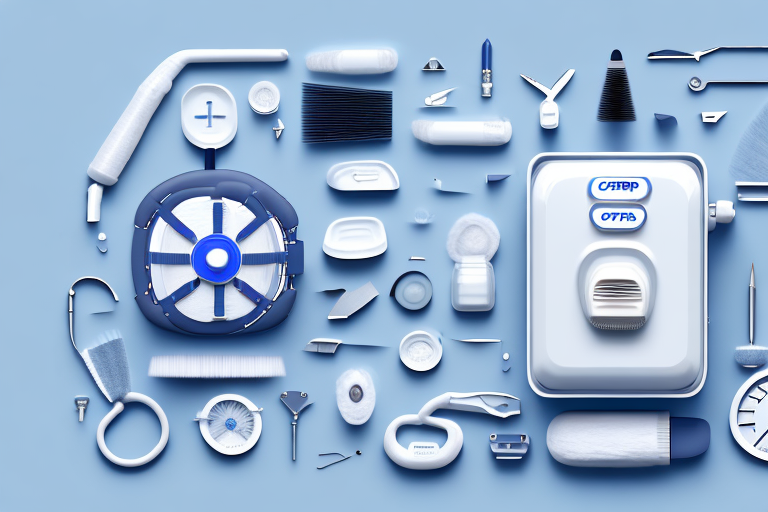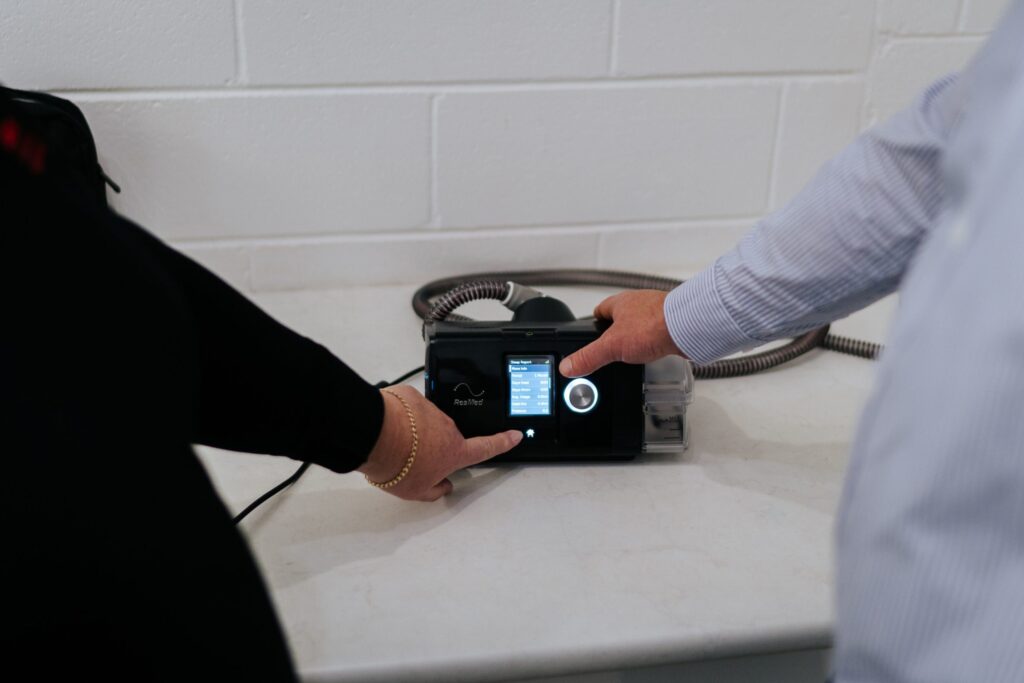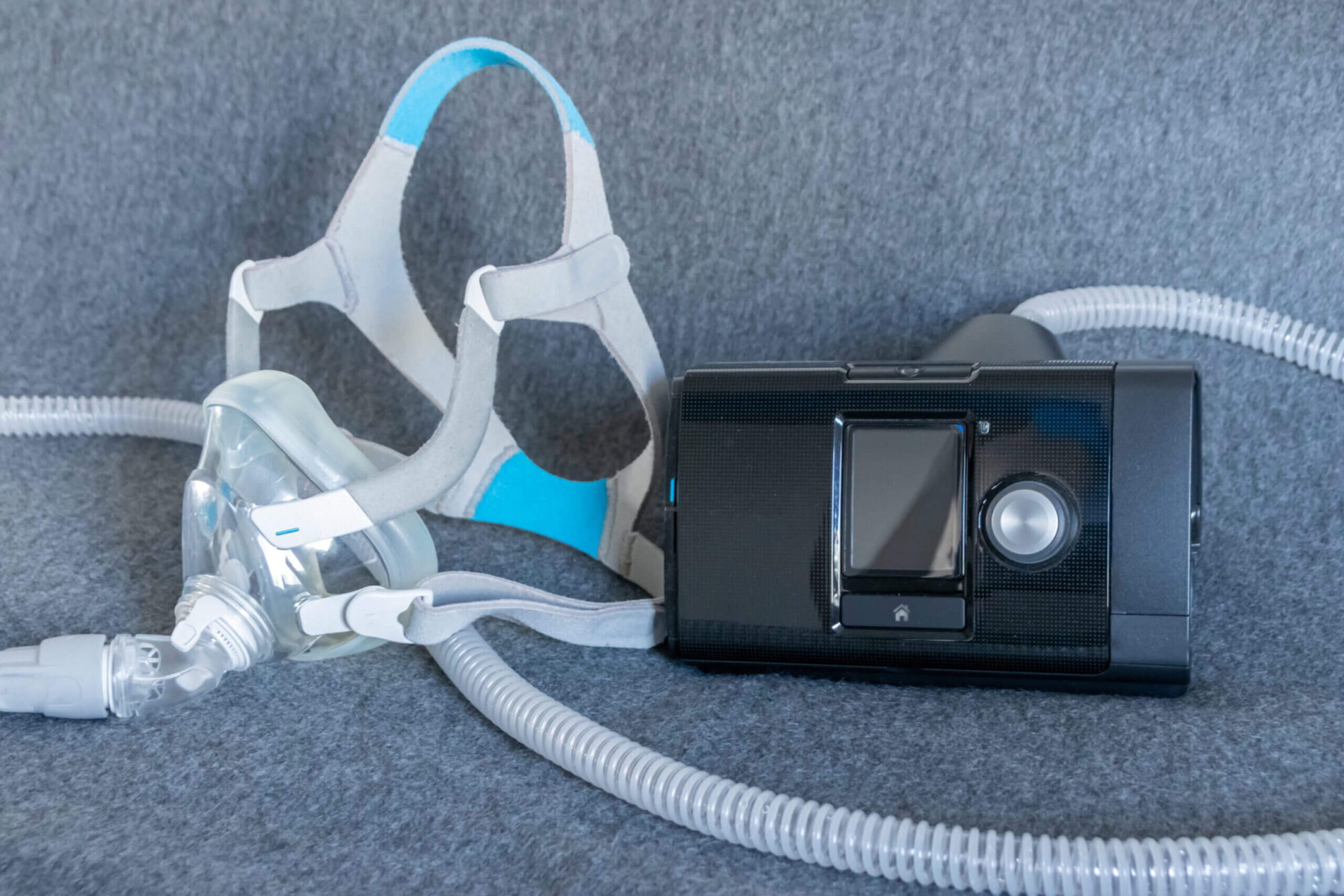Sleep apnea is a hidden health crisis that affects millions of people worldwide. It is a sleep disorder characterized by shallow breathing or pauses in breathing during sleep. This interruption in airflow can have serious consequences on one’s overall health and well-being. Fortunately, sleep apnea machines have emerged as a silent hero in effectively managing this condition and improving the quality of sleep for those affected. Understanding the importance of sleep apnea machines is key to addressing this often overlooked health issue.
The Role of Sleep Apnea Machines in Treatment
Sleep apnea machines, also known as continuous positive airway pressure (CPAP) machines, have revolutionized the treatment of sleep apnea. These devices deliver a constant flow of air pressure, which helps keep the airway open during sleep. By providing a steady stream of air, sleep apnea machine prevent breathing pauses and improve overall breathing efficiency.
Sleep apnea is a common sleep disorder that affects millions of people worldwide. It is characterized by repeated interruptions in breathing during sleep, leading to fragmented sleep and a range of health issues. These interruptions, known as apneas, can last for a few seconds to a minute and can occur multiple times throughout the night. Sleep apnea machines play a crucial role in managing this condition and improving the quality of life for those affected.
How Sleep Apnea Machines Work
Sleep apnea machines consist of three main components: a mask that fits over the nose or mouth, tubing that connects the mask to the machine, and a CPAP machine itself. The machine generates air pressure based on the individual’s needs, ensuring that their airway stays unobstructed throughout the night. The mask is designed to be comfortable and secure, allowing for a peaceful night’s rest.

When a person with sleep apnea wears the mask and turns on the CPAP machine, a gentle stream of pressurized air is delivered into their airway. This constant flow of air acts as a splint, keeping the throat open and preventing the collapse of the soft tissues that cause apneas. The pressure is adjusted to the specific needs of the individual, as prescribed by their healthcare professional.
By providing a continuous positive airway pressure, sleep apnea machines effectively treat sleep apnea and restore normal breathing patterns. The increased airflow helps keep the throat muscles from collapsing, thereby reducing snoring and the frequency of breathing pauses. This allows individuals to experience uninterrupted sleep, leading to improved daytime alertness, reduced fatigue, and better overall health.
Different Types of Sleep Apnea Machines
There are various types of sleep apnea machines available, each catering to different needs and preferences. CPAP machines are the most common type, delivering a fixed level of air pressure. Bi-level positive airway pressure (BiPAP) machines provide differing levels of air pressure for inhalation and exhalation, accommodating individuals with specific respiratory needs. Additionally, automatic positive airway pressure (APAP) machines adjust the air pressure based on the individual’s breathing patterns throughout the night.
Choosing the right sleep apnea machine depends on factors such as the severity of sleep apnea, individual comfort, and any other underlying health conditions. Working closely with a healthcare professional can help determine the most suitable option. It is important to note that using a sleep apnea machine may require some adjustment and getting used to, but the benefits in terms of improved sleep quality and overall well-being are well worth it.
In addition to the different types of machines, there are also various mask options available to ensure comfort and a proper fit. Some masks cover the nose, while others cover the mouth or both. There are also masks designed specifically for individuals who breathe through their mouths during sleep. The choice of mask depends on personal preference and individual needs.
It is essential to regularly clean and maintain sleep apnea machines to ensure their effectiveness and longevity. This includes cleaning the mask, tubing, and machine components according to the manufacturer’s instructions. Regular replacement of filters and other disposable parts is also necessary to maintain optimal performance.
In conclusion, sleep apnea machines have revolutionized the treatment of sleep apnea by providing a continuous positive airway pressure that keeps the airway open during sleep. These machines help improve breathing efficiency, reduce snoring, and prevent breathing pauses, leading to better sleep quality and overall health. With different types of machines and mask options available, individuals can find a solution that suits their specific needs and preferences. It is important to work closely with a healthcare professional to ensure the most effective treatment plan for sleep apnea.

Defining Sleep Apnea: A Hidden Health Crisis
Sleep apnea is a chronic condition that disrupts regular breathing patterns during sleep. There are three main types of sleep apnea: obstructive sleep apnea (OSA), central sleep apnea (CSA), and complex sleep apnea syndrome (CompSA). OSA is the most common type, caused by the relaxation of throat muscles that block the airway. CSA occurs when the brain fails to send proper signals to the muscles that control breathing. CompSA is a combination of OSA and CSA.
The Science Behind Sleep Apnea
During sleep, our body goes through various sleep stages, including deep sleep and rapid eye movement (REM) sleep. Sleep apnea disrupts these stages by causing intermittent breathing pauses, which decrease oxygen levels in the blood. This triggers the brain to wake the person momentarily to reopen the airway. These disruptions not only lead to poor sleep quality but also increase the risk of various health conditions.
Research has linked sleep apnea to cardiovascular problems, such as high blood pressure, heart disease, and stroke. It can also impact cognitive function, mood stability, and overall quality of life. Therefore, early identification and appropriate management of sleep apnea are crucial.
Common Symptoms and Risks of Sleep Apnea
Recognizing the symptoms of sleep apnea is key to getting the necessary help. The most common symptom is loud, chronic snoring, often accompanied by choking or gasping sounds during sleep. Excessive daytime drowsiness, morning headaches, and difficulty concentrating are also common signs. If left untreated, sleep apnea can increase the risk of accidents, hypertension, diabetes, and depression.
It is important to note that sleep apnea affects people of all ages and genders. While it is more prevalent in older adults and those who are overweight, it can also occur in children and individuals with a healthy body weight. Therefore, it is essential to raise awareness about sleep apnea and its potential impact on overall health.
Diagnosing sleep apnea involves a comprehensive evaluation, which may include a sleep study conducted in a specialized sleep center. This study monitors various aspects of sleep, such as breathing patterns, brain activity, and oxygen levels, to determine the presence and severity of sleep apnea. Once diagnosed, treatment options for sleep apnea can vary depending on the type and severity of the condition.
For mild cases of sleep apnea, lifestyle changes such as weight loss, regular exercise, and avoiding alcohol and sedatives before bedtime may be recommended. In more severe cases, continuous positive airway pressure (CPAP) therapy is often prescribed. This therapy involves wearing a mask over the nose or mouth during sleep, which delivers a constant flow of air to keep the airway open.
In some cases, surgical interventions may be necessary to address the underlying causes of sleep apnea. These surgeries can range from removing excess tissue in the throat to repositioning the jaw or even implanting a device to stimulate the airway muscles. However, surgical options are typically considered when other treatments have failed or when the condition is severe and potentially life-threatening.
It is important for individuals with sleep apnea to work closely with healthcare professionals to find the most suitable treatment plan. Regular follow-up appointments and adjustments to treatment may be necessary to ensure optimal management of the condition and improve overall sleep quality and health.
The Impact of Sleep Apnea Machines on Health and Lifestyle
Effective treatment of sleep apnea has far-reaching benefits, both in terms of health and overall lifestyle. Sleep apnea machines have been proven to improve sleep quality, reduce daytime drowsiness, and enhance cognitive function. By providing a continuous flow of oxygen, they also reduce the risk of heart disease, stroke, and other associated complications.
Improving Sleep Quality with Sleep Apnea Machines
Sleep apnea can greatly disrupt a person’s sleep, leading to frequent awakenings and shallow sleep stages. Sleep apnea machines help address this issue by promoting uninterrupted sleep cycles. By ensuring a constant flow of air, individuals can experience deeper sleep stages, wake up feeling refreshed, and enjoy increased energy levels throughout the day.
Long-Term Health Benefits of Using Sleep Apnea Machines
Consistent use of sleep apnea machines can have profound long-term health benefits. By effectively treating sleep apnea, these machines reduce the strain on the heart and cardiovascular system. This, in turn, lowers the risk of high blood pressure, heart disease, and stroke. Additionally, improved sleep quality positively impacts mental health, cognitive function, and overall well-being.

Overcoming Challenges in Using Sleep Apnea Machines
While sleep apnea machines offer numerous benefits, there can be challenges associated with their use. It is essential to address common concerns and misconceptions to ensure individuals continue their treatment and experience optimal results.
Addressing Common Concerns and Misconceptions
Some individuals may have concerns about the comfort or noise level of sleep apnea machines. However, advancements in technology have significantly improved the comfort and noise levels of these devices. Additionally, healthcare professionals can assist in selecting the right mask and machine settings to enhance the overall experience.
Tips for Adjusting to a Sleep Apnea Machine
Adapting to a sleep apnea machine may require some time and patience. To ease the adjustment process, it is recommended to start by wearing the mask for short periods during the day. Gradually increase the duration until it becomes comfortable for nighttime use. Establishing a consistent sleep routine and practicing good sleep hygiene can also contribute to successful integration of sleep apnea machines into one’s lifestyle.
The Future of Sleep Apnea Treatment
As technology continues to advance, the future of sleep apnea treatment holds exciting possibilities. Researchers and innovators are continuously working on improving sleep apnea machine technology and exploring alternative methods of treatment.
Innovations in Sleep Apnea Machine Technology
Emerging trends in sleep apnea machine technology focus on enhancing user experience and convenience. Improvements include quieter machines, sleek designs, and smart features that monitor sleep patterns and adjust air pressure accordingly. Collaborations between wearable technology and sleep apnea machines are also being explored, enabling a more personalized and seamless treatment experience.
The Role of Lifestyle Changes in Managing Sleep Apnea
In addition to sleep apnea machines, lifestyle changes play a crucial role in managing sleep apnea. Maintaining a healthy weight, regular exercise, avoiding alcohol and sedatives, and sleeping on one’s side instead of the back can all contribute to alleviating symptoms. By adopting a holistic approach that combines technological advancements with lifestyle modifications, individuals can optimize their sleep apnea treatment outcomes.
Sleep apnea machines have transformed the management of this silent health crisis. By effectively treating sleep apnea, these machines improve sleep quality, enhance overall health, and promote a better quality of life. As awareness and understanding continue to grow, the importance of sleep apnea machines in addressing this issue will only increase. Embracing these silent heroes can lead to a healthier, more restful future for those living with sleep apnea.
More to read: Use these tips to recover from laser eye surgery quickly
